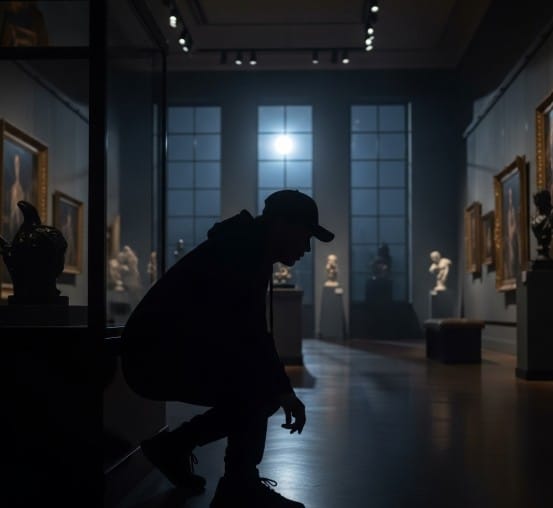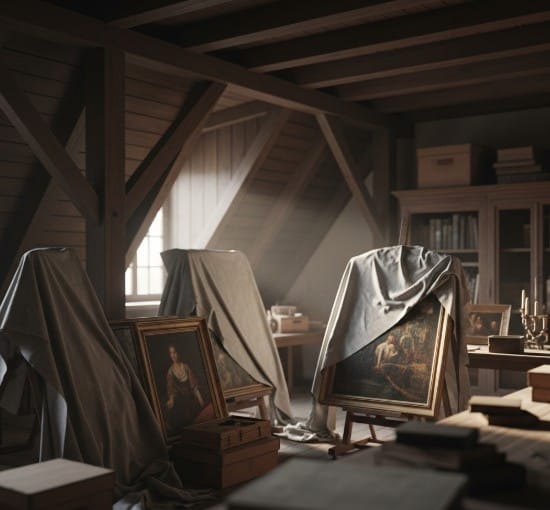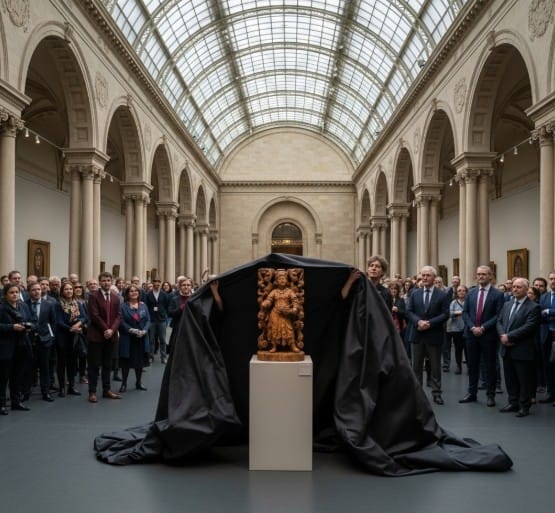The Mysterious World of Lost and Stolen Masterpieces
Introduction
The art world is often associated with beauty, creativity, and culture—but beneath the polished veneer lies a darker, more mysterious side: the world of lost and stolen masterpieces. Throughout history, priceless works of art have vanished from museums, private collections, and galleries, some never to be seen again. Whether taken by cunning thieves, misplaced through war, or hidden deliberately, these missing pieces represent both cultural tragedies and fascinating mysteries.
In this in-depth post, we delve into the stories behind some of the most famous lost and stolen masterpieces, explore why they disappear, and examine the efforts to recover them.

The Global Scale of Art Theft
Art theft is one of the most lucrative crimes in the world, ranking just behind drugs and weapons. According to INTERPOL, thousands of artworks are reported stolen each year, with only a fraction ever recovered. These aren’t just paintings and sculptures; manuscripts, ceramics, and religious artifacts are also prime targets.
Why is art stolen?
- Value: A single artwork can be worth millions.
- Portability: Many valuable works are relatively small and easy to transport.
- Laundering and Black Market: Art is used to launder money or exchanged in black-market deals.
- Private Obsession: Some thieves steal to possess rather than sell, adding a psychological layer to the mystery.
The Most Famous Stolen Masterpieces
1. The Concert by Johannes Vermeer
Stolen in 1990 from the Isabella Stewart Gardner Museum in Boston, The Concert is believed to be one of the most valuable stolen paintings in history. Valued at over $200 million, it disappeared along with 12 other works in what is considered the largest art heist in modern history. The empty frames still hang in the museum as a poignant reminder.
2. Portrait of a Young Man by Raphael
Often regarded as one of the greatest losses of World War II, this painting vanished during the Nazi occupation of Poland. It is widely believed to have been part of Hitler’s hoarded collection and has never been recovered.
3. Poppy Flowers by Vincent van Gogh
Stolen not once but twice from the Mohamed Mahmoud Khalil Museum in Cairo, this vibrant still life by Van Gogh has a turbulent history. Despite international efforts, it remains missing.

4. Le Pigeon aux Petits Pois by Pablo Picasso
Part of a 2010 theft at the Musée d’Art Moderne in Paris, this cubist piece by Picasso was allegedly thrown in the trash by an accomplice. If true, it represents one of the greatest cultural losses of our time.
The Mystery of Lost Masterpieces
Not all vanished artworks are the result of theft. Many were lost during wars, natural disasters, or neglect. Ancient artifacts and early religious art often fall into this category. Some disappear in private collections and re-emerge decades later.
War and Looting
- WWII alone accounted for the disappearance of over 600,000 artworks.
- Many looted items were never returned and remain hidden in attics, private estates, or vaults.
Natural Disasters
- Earthquakes, floods, and fires have wiped out entire museum collections.
- Notable example: the 1906 San Francisco earthquake destroyed numerous private collections.
Misplacement or Misidentification
- Artworks sometimes get lost in storage, mislabeled, or misattributed.
- In 2010, a painting by Michelangelo was found in a private home—believed to be a copy for centuries.

Efforts to Recover Lost Art
Organizations and individuals around the world are dedicated to finding and returning lost and stolen masterpieces.
Key Players:
- INTERPOL and FBI Art Crime Team
- The Art Loss Register
- UNESCO and ICOM (International Council of Museums)
- Private detectives and art historians
These groups use databases, facial recognition, AI, and even crowd-sourced tips to locate artworks. Sometimes, recovered pieces are in surprisingly good condition, even after decades.
Cultural and Financial Impact
When a masterpiece disappears, the cultural loss is incalculable. These artworks are not just property; they are part of human heritage. Their absence leaves gaps in museum collections, scholarly research, and public understanding of history.
Financially, stolen art can distort the market. Museums must pay higher insurance. Collectors grow cautious. Galleries face scrutiny.
Yet, stories of recovery—like Klimt’s Portrait of Adele Bloch-Bauer I or Matisse’s Odalisque in Red Pants—revive hope and global interest.

What You Can Do as an Art Enthusiast
- Stay informed about stolen art databases
- Support institutions working for restitution and recovery
- Collect ethically, ensuring provenance is documented
- Promote awareness through blogging, sharing, and educating others
At ISKUSS, we support cultural responsibility by promoting transparent sourcing and celebrating heritage-inspired artworks that honor tradition and creativity.
Conclusion
The world of lost and stolen masterpieces is both haunting and captivating. It reveals the vulnerability of even the most protected cultural treasures and reminds us of the value art holds beyond aesthetics—as memory, identity, and legacy.
As long as art exists, so too will the desire to possess it—legally or otherwise. But for every mystery, there’s a chance for rediscovery. And perhaps, someday, the missing masterpieces will return to the light.
